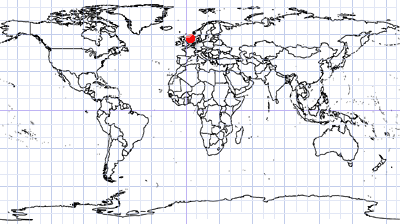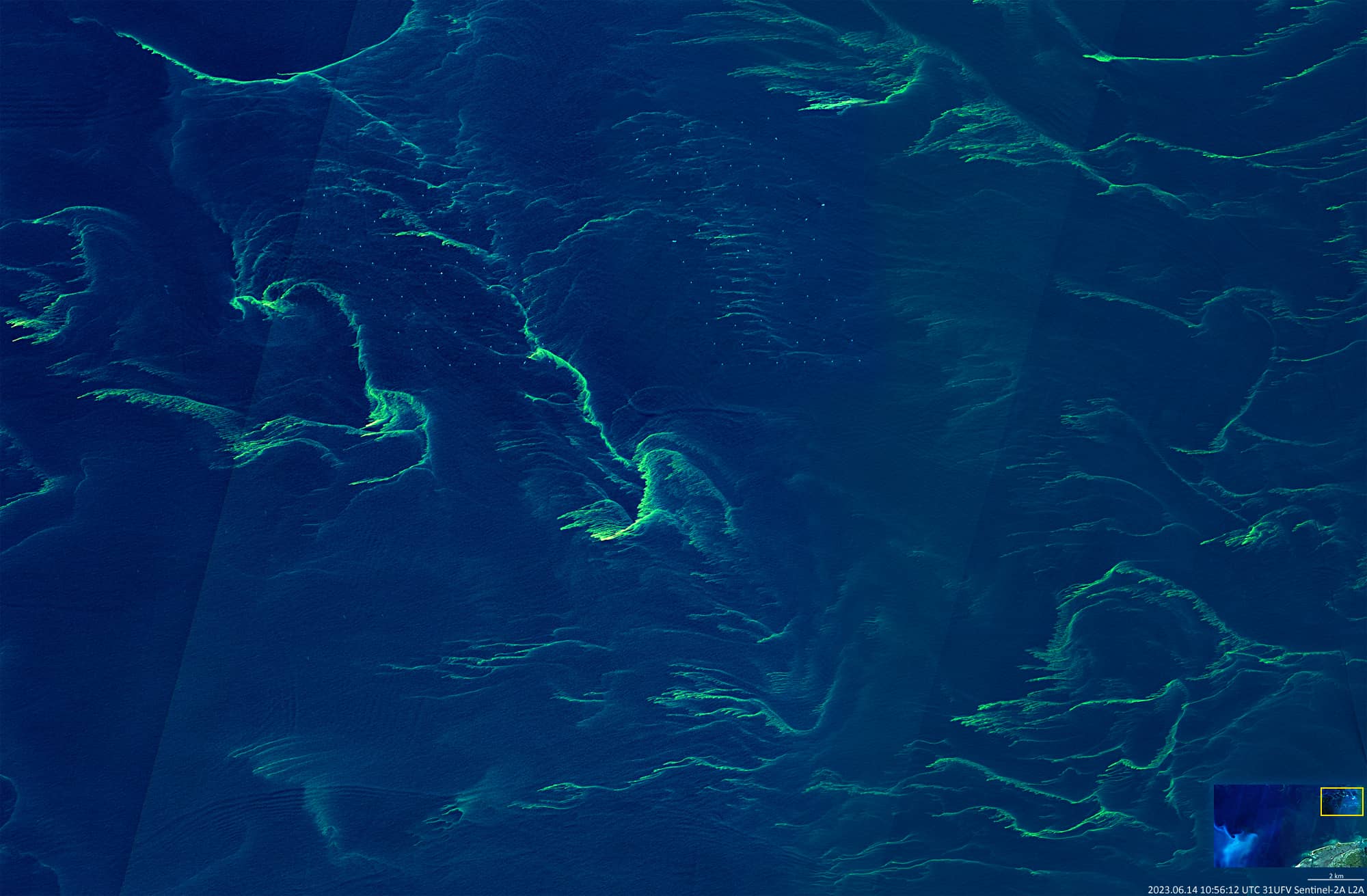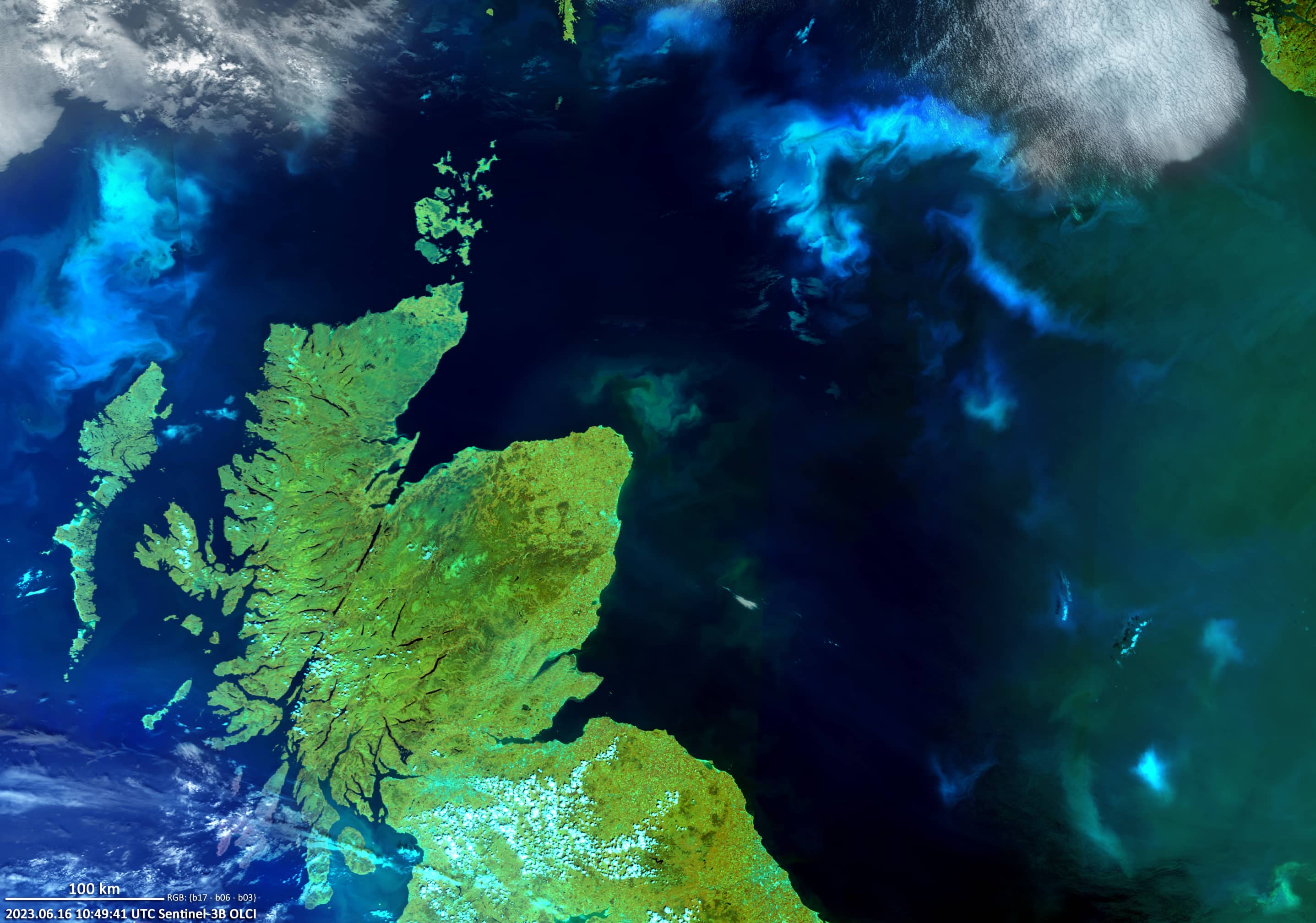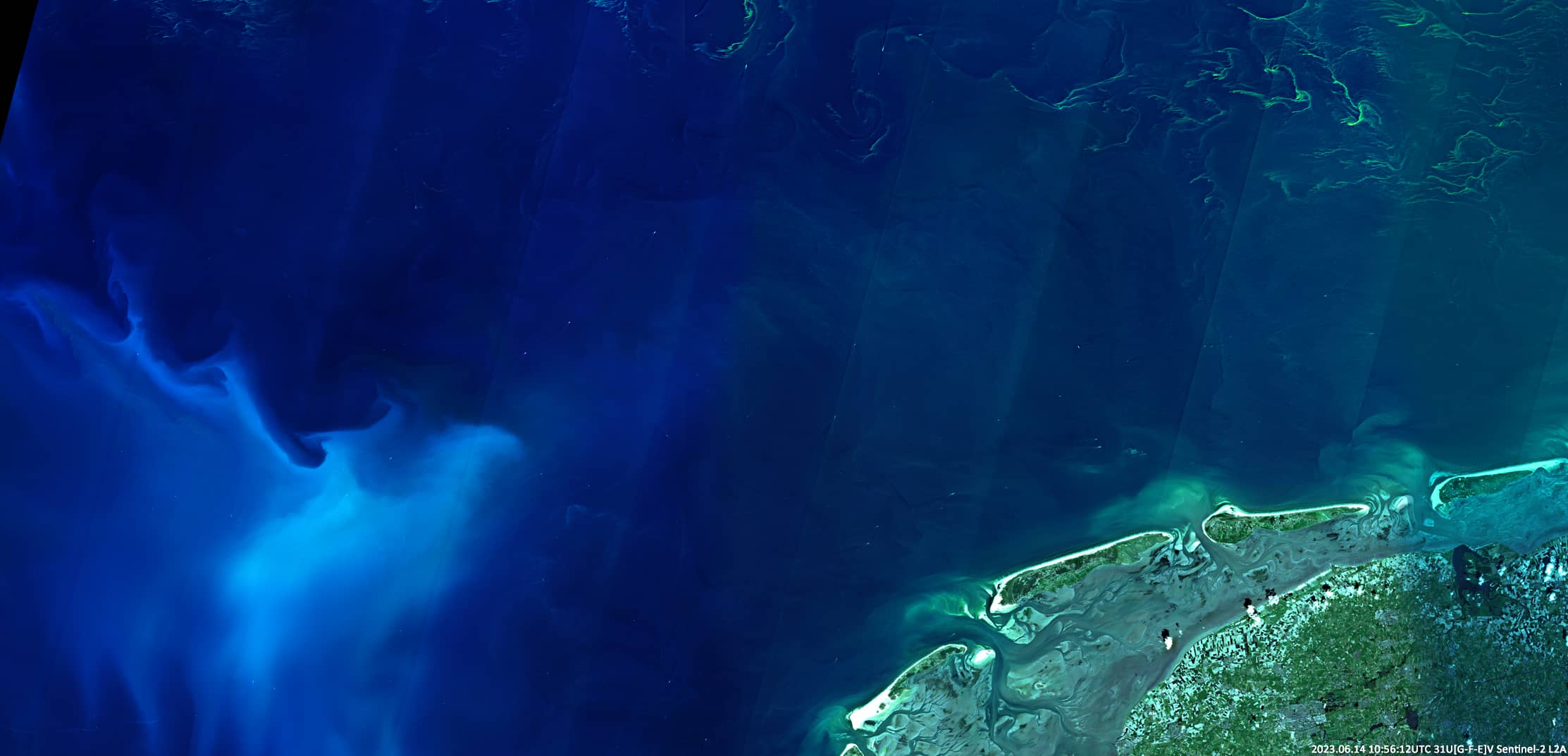
Algae bloom in the North Sea
Scotland – Norway – Netherlands | North Sea
Dates of acquisition: June 14th and 16th, 2023 | 10:56:08-12-16 UTC, 10:49:41 UTC
Sensor: Sentinel-3B OLCI
Coordinates: ca.58°N, 1°E → 53°N, 5°E
Drifting plant-like organisms (algae) are most abundant in the North Atlantic in late spring and early summer due to high nutrient levels in the water and increased sunlight availability (due to longer daylight hours).
Strong winds blowing over the relatively shallow North Sea, cause intensive vertical and horizontal mixing, bringing nutrients to the surface. Runoff from northern European rivers also contributes. The North Sea is therefore a region with intense algae blooms.
The blue-green colour of the phytoplankton changes the colour of the water, which is clearly visible even from space. Milky, light blue patches of water probably indicate the presence of coccolithophores, while greener patches are likely to be rich in diatoms or possibly dinoflagellates. Bright green structures with characteristic structures indicate the presence of Noctiluca. Colours are more intense and vivid where concentrations of phytoplankton are highest, i.e. where nutrients such as nitrates, phosphates, iron, and sulphur are the most abundant and water temperatures are ideal for algae growth and development. Phytoplankton have a short lifespan, usually no more than a week.
Observing the phytoplankton also provides information about the currents and eddies in the observed sea area, as well as the direction of the surface wind at the time of the observation.
Some images from the Sentinel-2 and Sentinel-3 satellites on June 14-16 are shown from the area northeast of Aberdeenshire, Scotland to Norwegian waters, and from the area west-northwest of the West Frisian Islands, the Netherlands.





